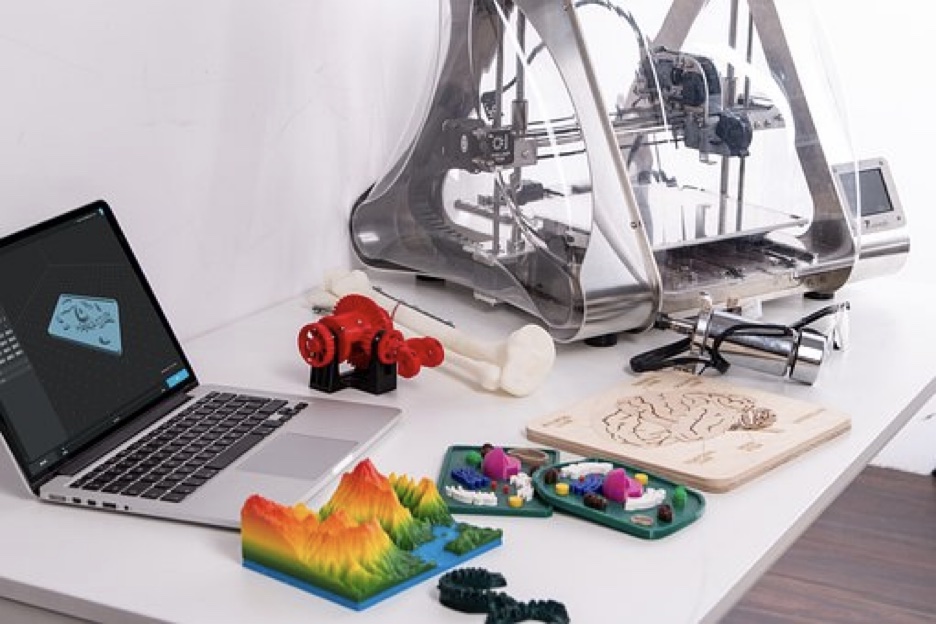A short time ago, additive manufacturing’s advantages were yet an unproven theory. We discussed the pros and cons of using additive manufacturing instead of conventional, high-volume methods.
3D printing is quickly becoming a popular manufacturing technology due to the time savings it offers in design and production as well as the increased effectiveness of the finished items. Now that it’s hit its stride, additive manufacturing will be a key component of the coming manufacturing renaissance, and 3D printing will have a promising future.

The Birth Of Rapid Prototyping
3D printing is being used for jigs, fixtures, tooling, bridge manufacture, and production parts. Heavy equipment and automated equipment have seen the most use cases for jigs, and fixtures, including tooling; healthcare has always been the largest adopter of bridge production; and orthopedics and industrial machines have seen the most use of 3D printing for parts and components.
Additive manufacturing enhances every step of product development, from prototype to full-scale production. Without a focus on a full-scale production, additive lacks a major benefit: more efficient lifetime management.
Today, we’re shifting from capability to capacity. Future 3D printing applications will be integrated into all aspects of new product introduction (NPI), where volume scaling to reach price points will become less necessary.
The Uplifted Resilience Of The Supply Chain System Via Digitization
Worldwide supply chains can sometimes be unpredictable, as the epidemic showed. Logistics management has historically prioritized cost and efficiency over resilience. COVID-19’s supply chain influence was felt across many industries, primarily healthcare and medical equipment. Now, industries aim to build supply chain resilience.
When there was a lack of PPE and ventilator parts, additive manufacturing helped. Faced with pandemic-related hurdles, Superfeet began developing face covers. With 3D printing as their principal manufacturing method, transitioning to shields was quick and cost-effective.
Additive manufacturing converts the stacks of boxes filling up space into digital copies that can be kept in the cloud and accessed when needed.
Manufacturers can better manage items from inception through end-of-life with 3D printing.
Customization Wrapped Under The Threads Of Flexibility
Demand for personalized products is altering many businesses. Customers prefer custom-made products to mass-produced ones to satisfy their likes and preferences.
Low-volume additive manufacturing enables personalization and customization. 3D printing improves brand responsiveness through additive manufacturing design.
Instead of developing intelligent market predictions and spraying identical artifacts into the market, possible to manufacture smaller batches, allowing engineers and designers to modify design concepts and innovate cost-effectively as inspiration strikes, market sentiment is recognized, or feedback from customers trickles in.
Higher Degrees Of Global Sustainability
Finally, sustainability and conservation are two of the most important principles that underpin additive manufacturing. One of the benefits that are inherent to the solution is that there is less waste material, if not none at all.
On the other side, the idea of a cashless economy is also prevailing via the trades conducted through digital currencies. Trading bots like pattern trader and others are there to help traders to gain the most out of their income.
It is intrinsically less wasteful than conventional subtractive techniques of production and has the ability to separate the creation of financial benefits from the impact that business operations have on the environment.
Final Thought: Witnessing The Blue Sky
The world’s manufacturing industry is at a crossroads right now.
We’ve reached a tipping point where our suggestions, designs, and products can almost entirely exist in the digital space, and where we can progressively convert those portrayals into physical goods using sound production methods, at affordable prices, and in sufficient quantities, using additive manufacturing.
Additive manufacturing has shown to be revolutionary, transforming enterprises and sectors with astonishing efficacy as the first totally digital production technology.
Interesting Related Article: “The Incredible Potential of 3D Printing“

